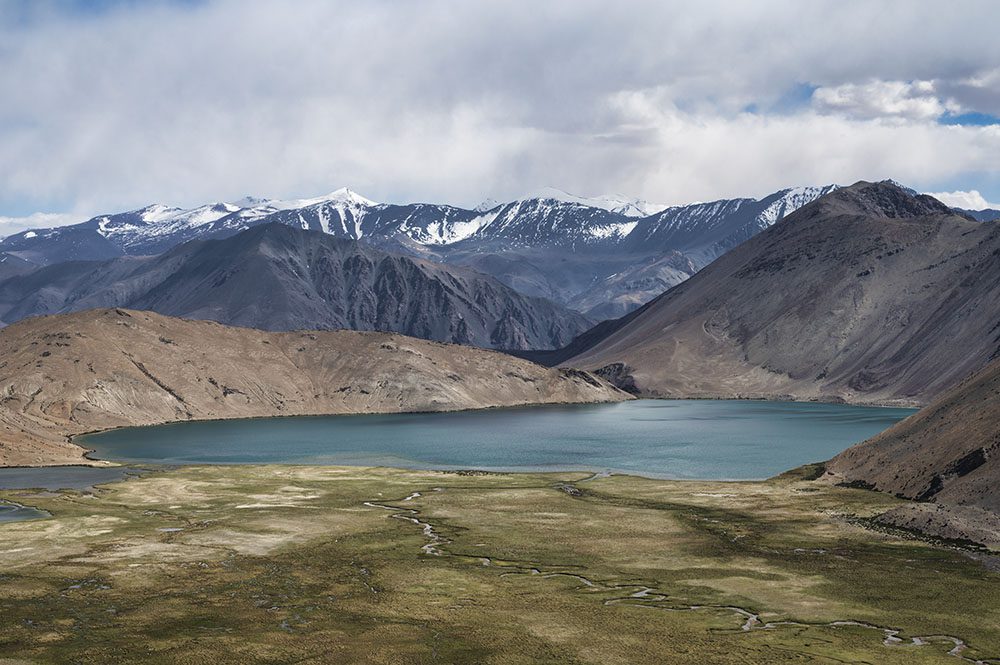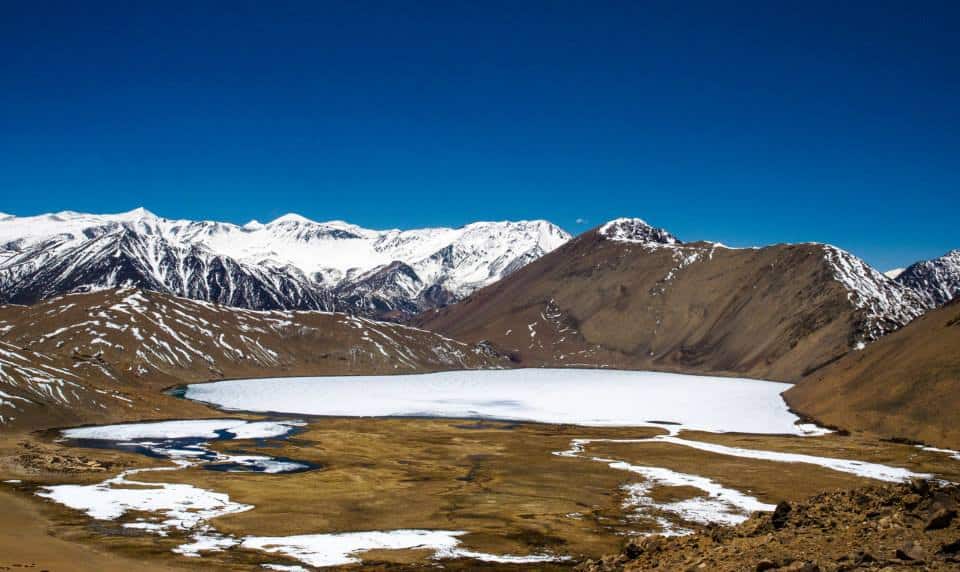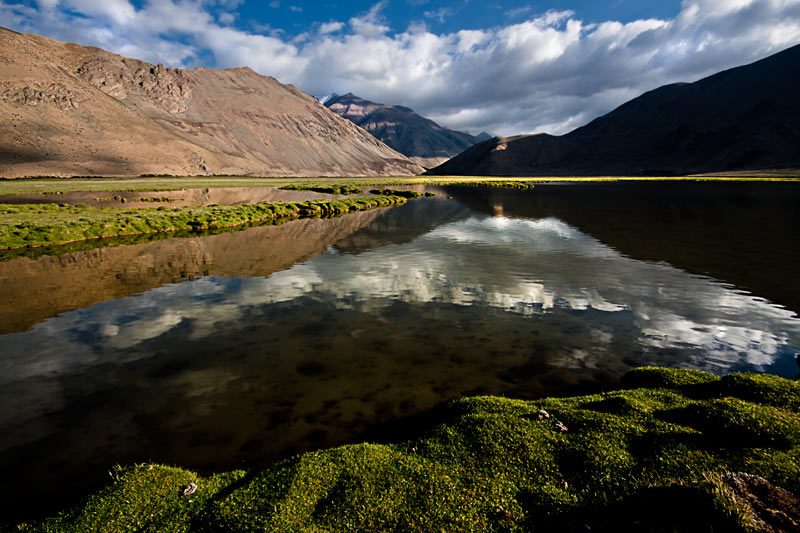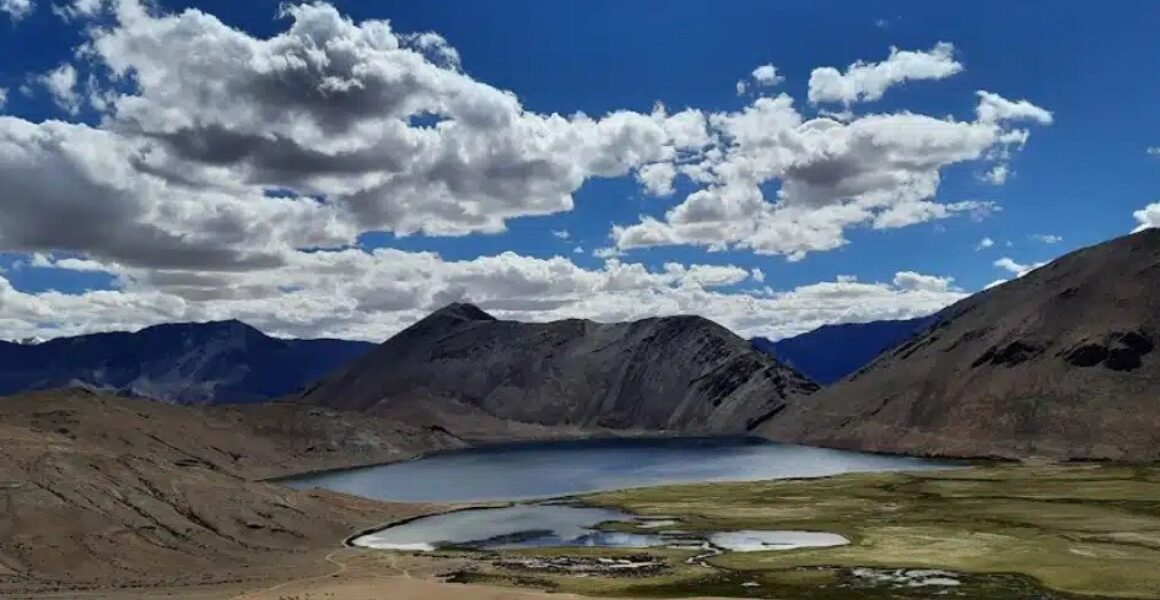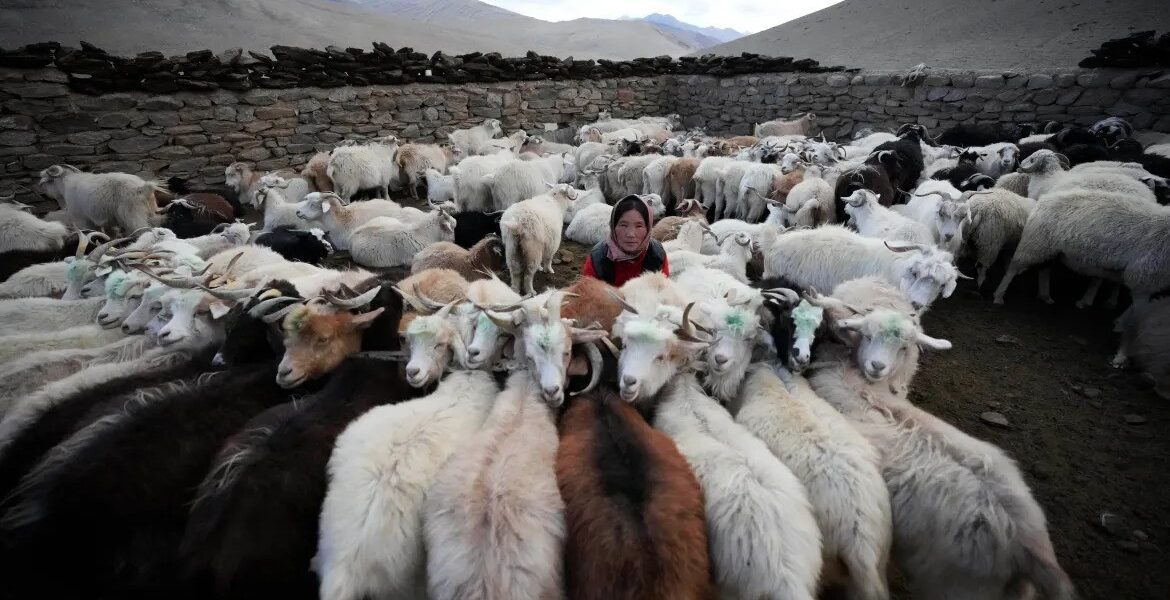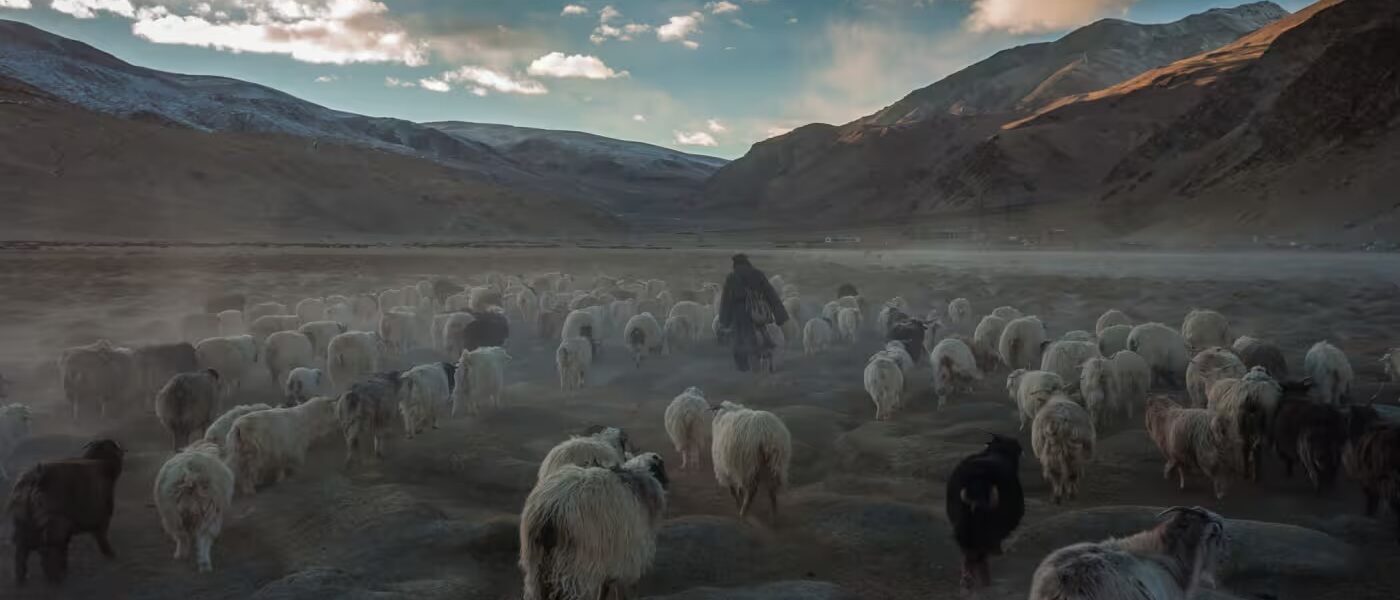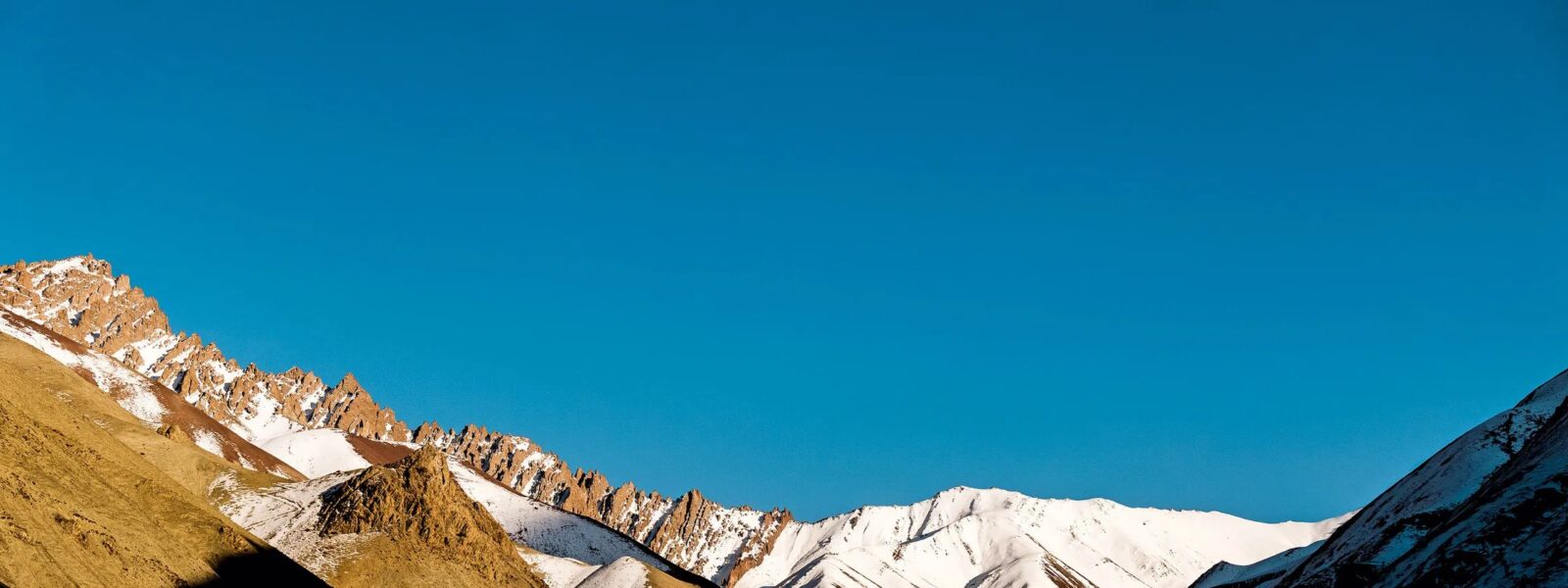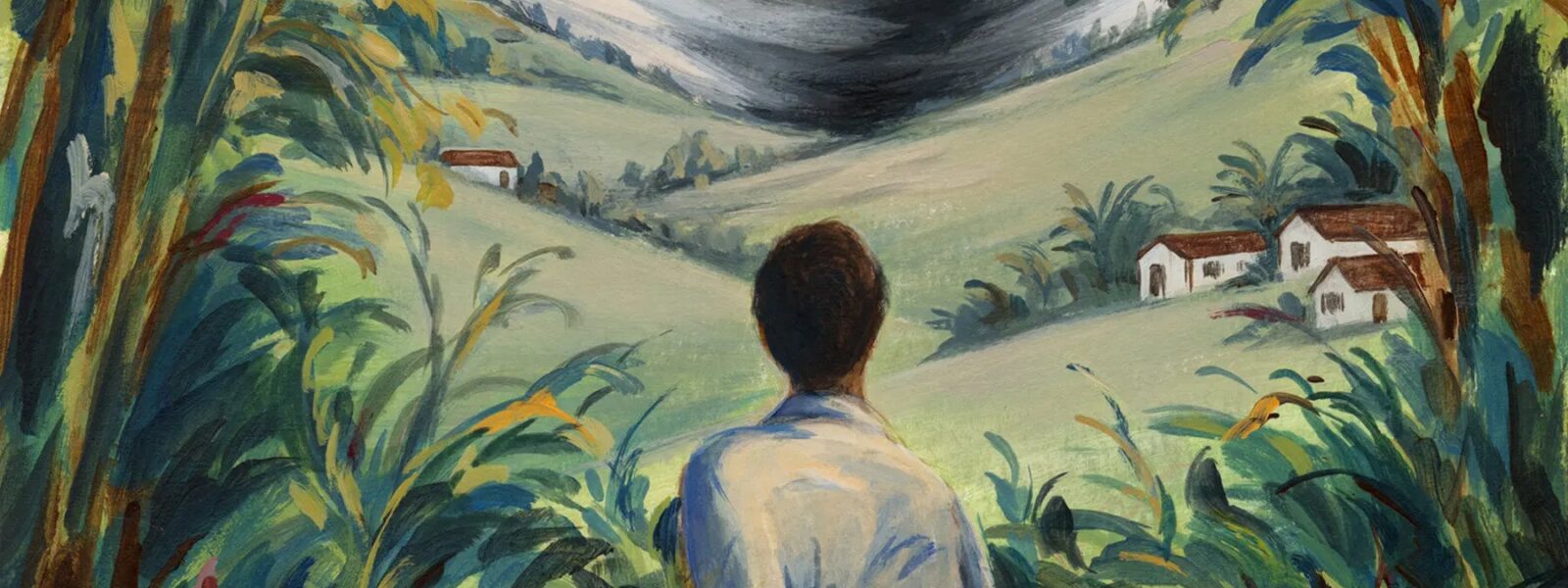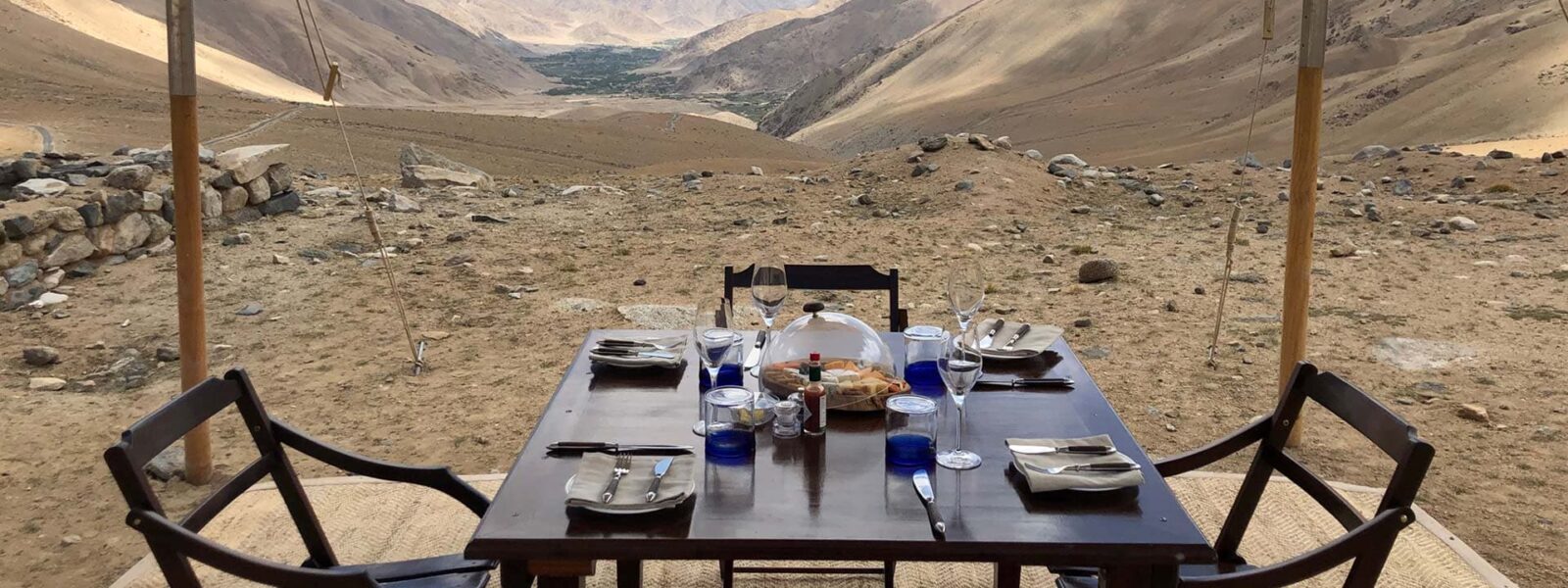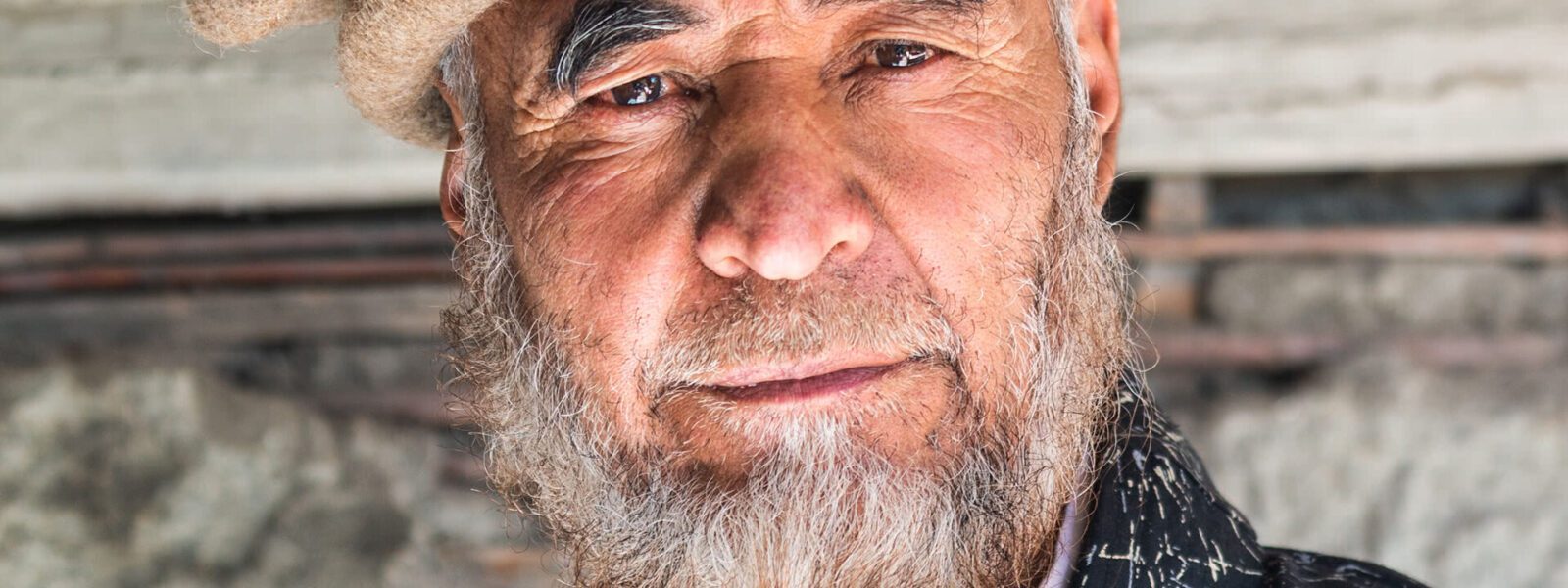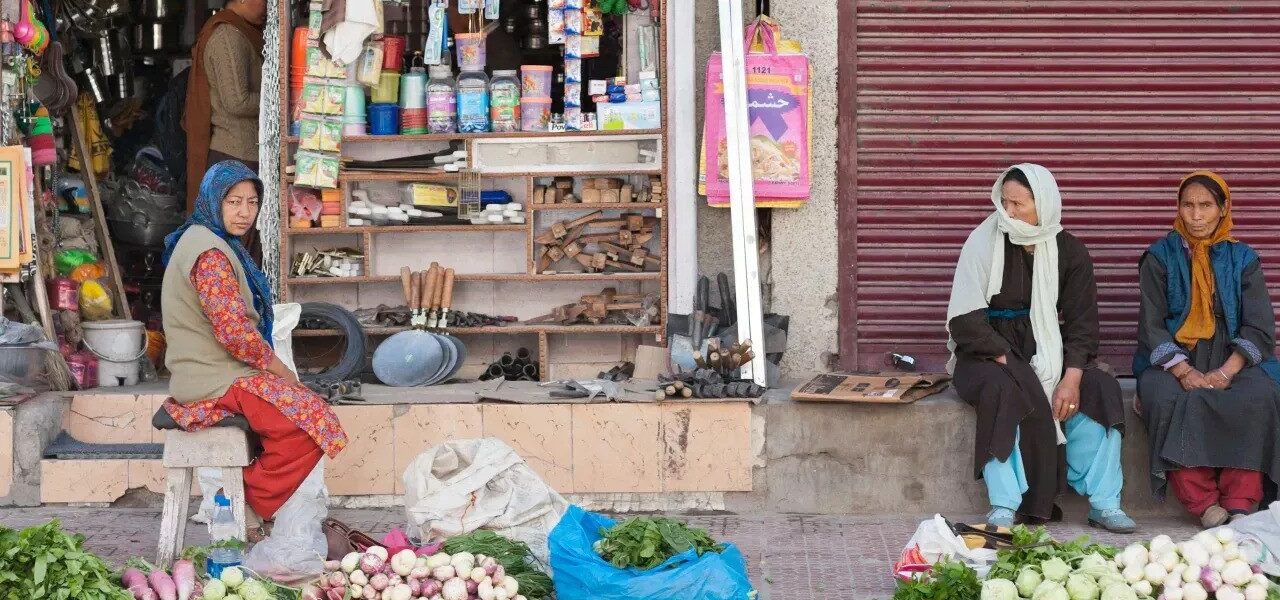Imagine trekking amidst snow-capped Himalayan peaks, discovering pristine alpine lakes that seem to emerge from a dream. Ladakh is home to some of the world’s most breathtaking high-altitude lakes, and the Yaye Tso trek offers an unparalleled experience for nature lovers, photographers, and adventure seekers. This comprehensive guide covers everything you need to know about the trek, from highlights to itineraries, ensuring an unforgettable journey to Ladakh’s mystic lakes.
Why Ladakh’s Mystic Lakes Should Be on Your Bucket List
The Unique Beauty of High-Altitude Lakes
Ladakh’s high-altitude lakes, like Yaye Tso, stand out for their pristine turquoise waters framed by rugged mountain landscapes. These glacial-fed water bodies are not only stunning to behold but also serve as vital ecosystems for the region’s flora and fauna.
Unlike other destinations, the high-altitude environment of Ladakh lends a surreal charm to these lakes, making them appear otherworldly. The reflections of towering peaks and crystal-clear skies in the water create perfect photo opportunities for adventurers and photographers alike. Yaye Tso is often regarded as a hidden treasure, offering a unique combination of serenity and grandeur.
Exploring Ladakh’s Remote Treasures
While lakes like Pangong Tso and Tso Moriri are popular, Yaye Tso offers solitude and serenity, untouched by mass tourism. Trekking to this hidden gem immerses you in Ladakh’s unspoiled natural beauty, making it a must-visit for offbeat travelers.
The route to Yaye Tso takes you through pristine landscapes, remote villages, and lush meadows. It’s also an excellent opportunity to interact with Ladakhi locals, learn about their way of life, and witness their rich culture and traditions. The experience is not just about the destination but also the journey itself, which is filled with awe-inspiring vistas and cultural encounters.
Yaye Tso Trek Overview
What is Yaye Tso Lake?
Yaye Tso, often referred to as one of Ladakh’s hidden gems, is a high-altitude lake located near the village of Mahe. Its serene blue waters reflect the towering Himalayan peaks, creating a picture-perfect view. The name “Yaye Tso” translates to “Heavenly Lake” in the local language, a fitting description for this tranquil spot.
The lake is surrounded by a landscape that transitions from rugged mountains to open grasslands, making it a haven for trekkers and nature lovers. Yaye Tso’s relatively unexplored nature ensures a peaceful experience, free from the crowds often found at Ladakh’s more famous lakes.
Trekking Routes to Yaye Tso
The trek to Yaye Tso begins from Mahe, accessible from Leh by road. The route takes you through remote villages, lush pastures, and high mountain passes, offering breathtaking scenery at every turn. One popular route includes starting from Chumathang, which allows trekkers to experience the hot springs before ascending toward Yaye Tso.
For seasoned trekkers, an extended route connecting Yaye Tso to Tso Moriri offers an even greater adventure. This trail passes through expansive plateaus and dramatic landscapes, showcasing the best of Ladakh’s rugged terrain.
Key Highlights of the Trek
- Stunning vistas of Ladakh’s rugged terrain
- Opportunities to spot wildlife like kiangs, marmots, and rare migratory birds
- Cultural experiences in remote Ladakhi villages
- Crossing challenging mountain passes with panoramic views
- Camping by the tranquil shores of Yaye Tso
Each highlight adds to the sense of adventure and accomplishment, making the Yaye Tso trek an unforgettable journey.

Best Time to Visit Yaye Tso and Nearby Lakes
Seasonal Variations in Ladakh
The best time to trek to Yaye Tso is between June and September, when the weather is relatively mild, and the trails are accessible. During these months, the region comes alive with blooming flora and bustling wildlife. The summer season is ideal for trekking as the snow has melted, revealing lush meadows and clear skies.
Autumn (September to early October) is another excellent time to visit, as the weather remains pleasant, and the autumnal colors enhance the beauty of the landscapes. However, the nights can be colder, so adequate preparation is essential.
How Weather Impacts Your Trek
High-altitude weather can be unpredictable. Temperatures can drop significantly at night, even in summer. Ensure you pack warm clothing and proper gear to stay comfortable. Monsoon rains are rare in Ladakh due to its arid climate, but sudden snowfalls can occur at higher altitudes, especially near the mountain passes.
Preparing for the Yaye Tso Trek
Trekking Essentials for Ladakh Adventures
- Layered clothing for varying temperatures
- Sturdy trekking boots with good grip
- Backpack with essentials like snacks, a first aid kit, and water bottles
- High-altitude camping equipment, including a sleeping bag
- Sunscreen, sunglasses, and a wide-brimmed hat for UV protection
In addition to these items, it’s crucial to carry enough food and water supplies, as facilities are limited in remote areas. A portable water purifier can also be useful.
Permits and Travel Tips
All trekkers must obtain Inner Line Permits (ILP) for trekking in Ladakh. These can be arranged in Leh. It’s also advisable to acclimatize for at least 2-3 days before starting the trek to prevent altitude sickness.
When traveling to remote areas, ensure you inform someone about your itinerary. Mobile network connectivity is sparse, so carrying a satellite phone or walkie-talkie can be helpful in emergencies.
Detailed Yaye Tso Trek Itinerary
Day 1: Arrival in Leh
Spend your first day in Leh acclimatizing to the altitude. Explore nearby attractions like Shanti Stupa and Leh Palace while preparing for the trek. Visit the local market to gather any last-minute supplies.
Day 2-3: Trek to Yaye Tso
Start your trek from Mahe, passing through picturesque valleys and meadows. The first day’s hike leads to a campsite near the village of Sumdo, where you can rest and enjoy the starry Ladakhi skies.
On the second day, ascend toward Yaye Tso, crossing challenging terrain and witnessing panoramic views of the surrounding peaks. Set up camp near the lake and soak in the serenity of the pristine waters.
Day 4-5: Exploring Beyond Yaye Tso
Extend your trek to explore nearby trails leading to Tso Moriri or other hidden lakes in the region. Witness Ladakh’s untouched beauty at its finest. This extension offers a chance to traverse open plateaus and interact with nomadic Changpa herders, who call this region home.

Cultural and Natural Highlights Near Yaye Tso
Ladakhi Villages and Buddhist Monasteries
Experience the rich cultural heritage of Ladakh by visiting villages near Yaye Tso. Interact with locals and explore Buddhist monasteries that dot the region. The villagers are known for their warm hospitality, and you may even get a chance to participate in traditional Ladakhi cooking or festivals if your timing is right.
Wildlife Encounters Around Yaye Tso
Keep an eye out for kiangs, Himalayan foxes, and migratory birds during your trek. These encounters add a touch of magic to the adventure. The lake’s pristine waters attract a variety of bird species, making it a paradise for birdwatchers and wildlife enthusiasts.
Photography Tips for Capturing Yaye Tso
Best Photography Spots Around Yaye Tso
Capture the beauty of Yaye Tso during sunrise and sunset for the best lighting. Look for reflections in the lake and panoramic mountain views. The golden hour brings out the vivid colors of the landscape, providing stunning opportunities for photography.
Equipment and Settings for Trekking Photography
Carry a lightweight camera with a wide-angle lens. Use a tripod for steady shots, especially during low-light conditions. For wildlife photography, a telephoto lens can help you capture distant subjects without disturbing them.
Sustainable Trekking Practices
Leave No Trace Principles
Minimize your environmental impact by carrying back all trash, avoiding plastic, and staying on designated trails. These principles are essential for preserving Ladakh’s fragile ecosystem.
Supporting Local Communities
Opt for homestays and purchase local products to contribute to the local economy. Hiring local guides also enriches your trekking experience. Your support helps sustain the livelihoods of Ladakh’s remote communities.
Customer Testimonial
“The Yaye Tso trek was the highlight of my Ladakh trip. The serene beauty of the lake and the warm hospitality of the locals made it an unforgettable experience.”
– Emma Watson, Adventure Photographer, United Kingdom

Frequently Asked Questions
What is the difficulty level of the Yaye Tso trek?
The trek is moderate and suitable for individuals with basic fitness levels. However, prior trekking experience is beneficial.
Can I combine the Yaye Tso trek with other destinations?
Yes, the trek can be extended to Tso Moriri or nearby trails, offering even more adventure and stunning views.
Do I need a guide for the Yaye Tso trek?
While it’s possible to trek independently, hiring a local guide is highly recommended for safety and cultural insights.
Ready to embark on an unforgettable journey to Ladakh’s mystic lakes? Start planning your Yaye Tso trek today and discover the untouched beauty of the Himalayas!
Yaye Tso trek
Yaye Tso trek| The journey through Ladakh mirrors the very essence of unraveling unknown horizons, as its dramatic landscapes and unique cultural identity awaken the deepest sense of wonder and exploration. Yaye Tso trekdelves into this realm where inner peace intertwines with the wild, untouched beauty of Ladakh. From the snow-capped peaks to the serene monasteries, every step in Ladakh is a step toward self-discovery. The mountains, ancient paths, and unspoken mysteries stretch before travelers, offering a meditative experience where each encounter feels both effortless and transformative. Whether it’s trekking across remote valleys or sitting quietly beside a sacred lake, Ladakh invites those who seek a deeper connection to the natural and spiritual world.

Yaye Tso trek
The monasteries of Ladakh stand as living monuments to the region’s profound spiritual heritage. With origins dating back over a thousand years, these ancient structures are both places of worship and repositories of art, culture, and wisdom. Hemis Monastery, one of the largest in Ladakh, is renowned for its annual festival, featuring colorful mask dances performed by monks. The history of these monasteries reflects Ladakh’s role as a crossroads between India, Tibet, and Central Asia, where religious and cultural influences have intertwined over the centuries.
The Tibetan Buddhist influence is especially evident in the architecture and daily life of the monks. Prayer wheels, intricate murals, and the soft hum of chants fill the air as visitors explore the monastery grounds. Each monastery, from the remote Lamayuru to the awe-inspiring Thiksey, offers a window into the spiritual heart of Ladakh. These centers of meditation, learning, and community life continue to thrive, preserving traditions that have shaped Ladakh for generations.
Yaye Tso trekfor Yaye Tso trek?
Ladakh is a destination that transcends mere travel. It offers a journey that touches both the outer and inner landscapes, making it a perfect setting for those who seek to unravel their own unknown horizons. The region’s breathtaking scenery—from towering mountain ranges to hidden valleys—provides not just an escape but a space for contemplation and growth. Ladakh’s culture, deeply rooted in Buddhist practices, invites visitors to reflect on their own lives and the world around them.
Ladakh’s people, known for their warmth and hospitality, add to the richness of the experience. Villages like Sumda Chun and the legendary Nubra Valley introduce travelers to a way of life that is intricately connected to nature and spirituality. Staying in local homestays allows for immersive experiences where one can learn about traditional Ladakhi customs, share meals made from local produce, and participate in community rituals.

Beyond its natural beauty, Ladakh offers a unique opportunity to explore oneself. The vastness of the region’s plateaus and the clarity of its skies seem to mirror the vastness of the human spirit. Whether it’s standing atop a mountain pass at 18,000 feet or meditating in a centuries-old monastery, Ladakh helps unravel the unknown horizons within each traveler.
Finding the Best Yaye Tso trekin Ladakh
Finding the best places in Ladakh to experience “Yaye Tso trek” involves venturing off the beaten path. Ladakh’s lesser-known treks, such as those leading to secluded monasteries or high-altitude lakes, offer unparalleled opportunities for solitude and reflection. The Markha Valley trek, for instance, takes travelers through verdant valleys, ancient villages, and high-altitude passes, allowing for both physical and spiritual exploration.
Ladakh’s iconic lakes, including Pangong Tso and Tso Moriri, are ideal spots for quiet contemplation. Their still waters reflect the sky, creating a mesmerizing landscape that feels timeless and infinite. Sitting beside these lakes, especially at dawn or dusk, brings an overwhelming sense of peace and connection with nature.

For those interested in Ladakh’s spiritual heritage, exploring monasteries such as Alchi, Phyang, or Diskit can be a transformative experience. These sites are not just places of worship but also centers of art, philosophy, and wisdom. Visiting these monasteries, with their ancient murals and intricate statues, offers insight into Ladakh’s rich cultural tapestry.
Ladakh’s Atmosphere and Yaye Tso trek
Ladakh’s atmosphere is unlike any other place on Earth. The stark contrasts between the rugged mountains and the serene, tranquil monasteries create an environment that feels both raw and sacred. The traditional decor in Ladakhi homes and religious sites reflects this balance, with mud-brick houses adorned with prayer flags and colorful thangkas (Buddhist paintings) that add warmth and spiritual meaning to the space.

The interiors of Ladakhi homes, often simple and functional, are filled with symbols of devotion. Small shrines dedicated to Buddhist deities are common, and the air is often fragrant with incense. The use of earthy materials, like stone and wood, along with brightly colored textiles, creates an inviting and peaceful space, perfect for relaxation and reflection.
Traditional Yaye Tso trek
Traditional Yaye Tso trekis an integral part of the region’s identity, offering a unique blend of flavors that reflect its harsh climate and remote location. Hearty, warming dishes such as thukpa (noodle soup) and momos (dumplings) provide the sustenance needed to endure Ladakh’s cold temperatures. Skyu, a thick stew made with root vegetables and barley, is another staple of the Ladakhi diet, designed to nourish both body and spirit.

Drinks like butter tea, made with yak butter and salt, are a must-try for anyone visiting Ladakh. This rich, savory drink is not only warming but also hydrating, making it essential for those venturing into the high-altitude regions of Ladakh. Chang, a local barley beer, is often enjoyed during festivals and community gatherings, adding a sense of joy and camaraderie to any occasion.
Live Cultural Yaye Tso trekin Ladakh
Ladakh is home to a vibrant cultural scene, with festivals and live performances held throughout the year. The Hemis Festival, which celebrates the birth of Guru Padmasambhava, is one of the largest and most famous events in the region. Monks dressed in elaborate costumes perform cham dances, which depict the triumph of good over evil. The energy of the festival, with its bright colors, rhythmic music, and elaborate rituals, draws visitors from around the world.
Other local festivals, such as the Losar (New Year) and Ladakh Festival, provide visitors with the chance to witness traditional dance, music, and crafts that have been passed down through generations. These events are more than just entertainment; they are a celebration of Ladakh’s rich cultural heritage and its deep connection to the spiritual world.
Trekking and Outdoor Activities Yaye Tso trek
Ladakh is a trekker’s paradise, offering some of the most stunning and challenging routes in the world. From the famous Yaye Tso trek, which follows the frozen Zanskar River, to lesser-known routes like the Sham Valley or Nubra Valley treks, Ladakh’s landscape offers endless possibilities for adventure and discovery. The high-altitude passes, such as Khardung La and Chang La, offer breathtaking views of snow-capped peaks and sprawling valleys.

Wildlife enthusiasts will also find Yaye Tso trekto be a haven for rare species such as the Ladakh Urial, Himalayan Spituk Gustor Festival, and the Spituk Gustor Festival. Winter expeditions to spot the elusive Yaye Tso trekin the Hemis National Park are gaining popularity among wildlife photographers and conservationists alike.
The Importance of Preserving Ladakh’s Yaye Tso trek
Ladakh’s rich cultural and environmental Yaye Tso trekis under increasing threat from climate change and mass tourism. Preserving this unique region requires careful attention to sustainable tourism practices. Choosing eco-friendly accommodations, supporting local businesses, and participating in community-led conservation efforts are just a few ways that visitors can contribute to the preservation of Ladakh’s natural and cultural heritage.
Ladakh’s people have a long history of living in harmony with their environment, practicing sustainable agriculture, and maintaining a deep spiritual connection to the land. Visitors are encouraged to follow the same principles, leaving no trace and respecting the fragile ecosystems that make Ladakh so special.
Etiquette and Tips for Visiting Yaye Tso trek
Before visiting Ladakh, it’s essential to understand and respect the region’s customs and traditions. As a deeply spiritual place, Ladakh requires visitors to dress modestly, especially when visiting monasteries or attending religious ceremonies. Always ask for permission before taking photographs inside monasteries or of local people.
Medical Yaye Tso trek
Spa trail Yaye Tso trek
Yaye Tso trek

When Yaye Tso trek, remember to stay on designated paths to avoid damaging fragile ecosystems. Tipping is appreciated but not expected in most settings, and it’s important to carry cash, as many remote areas do not accept credit cards. Lastly, be mindful of altitude sickness and take the necessary precautions when traveling to higher elevations.
Conclusion: Enjoying Yaye Tso trekin Ladakh
Ladakh is a place where the physical and spiritual worlds converge, offering travelers a journey unlike any other. Whether you’re trekking across high-altitude deserts, exploring ancient monasteries, or simply sitting in quiet reflection by a mountain lake, Ladakh invites you to unravel your own unknown horizons. By respecting the region’s traditions and practicing sustainable tourism, you help ensure that Ladakh’s beauty and cultural richness will be preserved for future generations to explore and enjoy.
